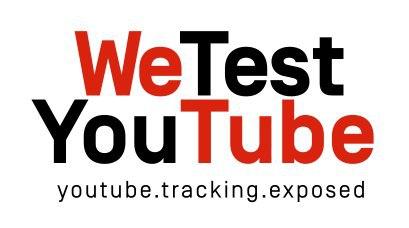This page is a work in progress – content need to be completed and English need a full revision –.
Methodologies
The collection methodology is a crucial attribute to judge, use and analyze evidences of algorithm personalization.
Compare blindly and acritically how YouTube serves different related content it is good only for simple exercise, but this approach wouldn’t produce any meaningful observation to figure out anything on YouTube. On the table below, we summarize the different approaches and the qualities of data collected.
| # | Approach name | Notes | Experiment |
|---|---|---|---|
| 1 | True, Genuine, profiles |
|
DSSG-berlin Datathon, First YouTube class, European Election Campaign. |
| 2 | Fresh profiles under researcher control |
|
Argentinian 2017 Analysis, Italian 2018, Brasialian 2019, ... |
| 3 | True profiles acting under direction |
|
potest#1, wetest#1, Workshop. |
Silicon Valley exploitative business model tought to people “more data, the better”. This page intent is also in stating why this blind and acritical data collection do not make any sense for us, for the researches, and for our message.
A researcher willing in understanding personalization and algorithmic discrimination, should give more importance to the methodology and data collection, be simple and explainable.
Experiments and Experiences on algorithmic testing
— The first workshop — 3 working days — 10 students & 2 facilitators
10 different students using their computers, open the same video at the same time. Here we compare the 20 related videos suggested


— The blue circles represent the related content, they are all in the center because they are shared among profiles.
— The small groups of individually-selected-videos are represented with Green circles, and profile 4 and 3, have such dedicated content because of their configured computer language (Korean and French, while the test was performed from Amsterdam in English).
— Below, the same test did by the same students, same room and IP address, same computers, but with their browser logged in Google/YouTube:

It is visually clear how the data points linked to the profiles cause personalized suggestions.

Regardless of Youtube API
We verified which videos YouTube declares as related by using the official API, and then compared those with what is actually displayed on people interface.

Red circles represent the videos declared by YT as related. In yellow and green, the videos actually suggested to watchers.

We knew API they can’t be considered a reliable method, I want to list why this misunderstanding is
— Achievements: have a rudimental method to compare among profile with reduced personalization vs profile highly personalizeed.
— The second workshop
Work in progress TODO trexit
— Collaborative, Worldwide, time restricted, guided observation (potest and wetest)
The collaborative observation is a new experiment in this regards. allow us to guide people in a few steps, we did it on PornHub, the name was poTEST, the Youtube collaborative test is a March 2020 experiment.
— Variable comparison
TODO explain from first test the CNN/FOX test.
A network visualization and analysis tool

— Automatized access approach
linkare methodology e mettere qui alcuni dei risultati (se unici e se possibili solo con accesso automatizzato)
Tools for analysts
TODO, should be done a list of tools we used, which limits and perks:
- en.wikipeda/Gephi,
- rawgraphs,
- Our dashboard (AudIt)
Tools and resources for wannabe algorithm analyst
API integration
Data scientists or third party integrator should use this
Our API allow to an individual to retrieved their data, and if a researcher has a list of personal token from partecipans, might collect all the data of their partecipants.API are handy also if you want to fetch, process, or store daily the updates. API docs
the CSV format
Data analysts, researcher should read it
CSV format is readable by spreadsheets like excel, google docs, and most of the data analysis tools.Each line of these CSV are one of the suggested videos, the documentation explain the different between personal API (they require a personal access token to access) CSV docs
Bokeh analyst dashboard
XXXXXXXXXXXXXXXXXX PLEASE HELP
AAAAA AAAAAAAAAAAAAA AAAAAAAAAAAAA A AAAAAAAA A IDEM
OOOOO OOOOOOOOOOOOO OOOOO OOOO OOOOOOOOOOOOOO SAME SAME SAME
repo on git
OOOOO OOOOOOOOOOOOO OOOOO OOOO OOOOOOOOOOOOOO SAME SAME SAME repo on git
